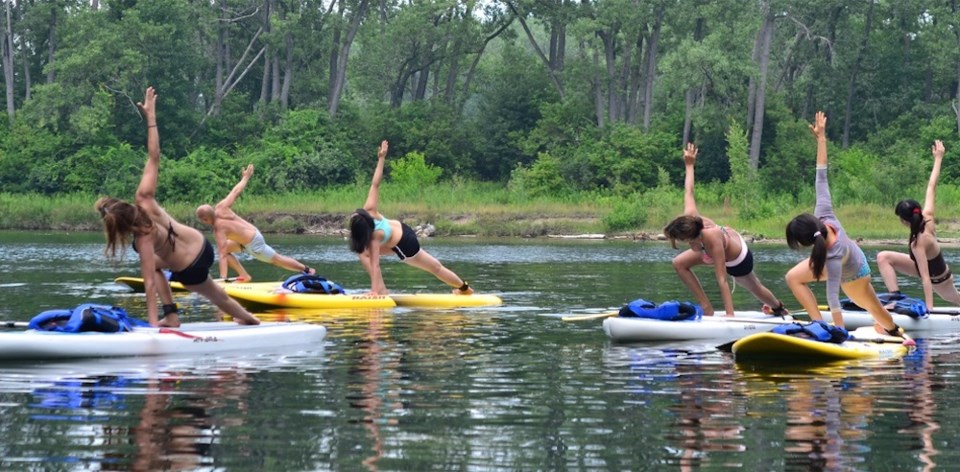In a news release issued by the Ontario Provincial Police (OPP), it is explained that, while stand-up paddleboards aren't referenced within small water vessel regulations, they are treated the same as watercraft, such as kayaks and canoes.
As such, they must be equipped with personal flotation device or lifejacket, 5 metres of buoyant heaving line, a sound-signalling device and more.
Full text of the OPP news release follows:
With the nice weather in place, more people are hitting the lakes and enjoying water related activities and pleasure craft. Stand-up paddle boards (SUP) are more common today than they've ever been.
The East Algoma Ontario Provincial Police (OPP) would like to remind citizens to have a safe and enjoyable summer season on the water.
Stand-up paddle boarding is a paddling activity whereby the operator navigates standing on a surf board and uses a paddle.
Stand-up paddle boarding evolved out of surfing, and has become a means of navigation on water bodies across Canada, including rivers, lakes and oceans.
There are rigid plastic and inflatable models.
Did you know:
As a relatively new type of small vessel, stand-up paddleboards are not specifically referenced in the regulations, and are therefore treated the same as other human powered pleasure craft (sit-on-top kayaks, canoes), with the same safety equipment carriage requirements.
When used for navigation, stand-up paddleboards must be equipped with the following: an approved personal flotation device or lifejacket, 15 metres of buoyant heaving line, a sound-signalling device (whistle, horn), navigation lights (if the vessel is operated between sunset and sunrise), and a magnetic compass when operated beyond sight of seamarks.
Non-navigation activities are not subject to the mandatory carriage of safety equipment (surfing, stand-up paddle board yoga).
In practice, the operation of stand-up paddleboards is similar to the operation of sit-on-top kayaks and other sealed-hull vessels.
Currently, an exception is provided under the regulations, stating that if every person on board a paddleboat, a water-cycle or sealed-hull, sit-on-top kayak is wearing a personal flotation device or lifejacket of an appropriate size, the paddleboat, water-cycle or kayak is required to carry on board only a sound-signalling device and, if the paddleboat, water-cycle or kayak is operated after sunset or before sunrise or in periods of restricted visibility, a watertight flashlight.
The exemption removes the requirement to carry 15 metres of buoyant heaving line, and motivates the wearing of personal flotation devices or lifejackets.
